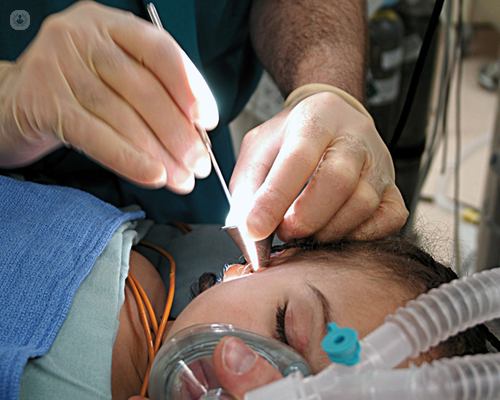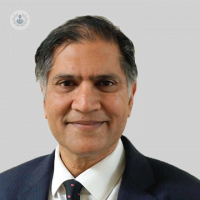Silencing middle ear myoclonus (Part two)
Escrito por:People with middle ear myoclonus may struggle deeply with the associated symptoms it brings. How can they address it?
Esteemed otologist Professor Manohar Bance has put together a two-part series about this condition. Here, he discusses the diagnosis process and treatment for middle ear myoclonus, as well as providing useful advice for its’ management.
In part one, this expert practitioner discusses the ins and outs of middle ear myoclonus in expert detail.

How is it diagnosed?
Primarily this middle ear myoclonus is diagnosed by the patient’s typical history. Sometimes the sounds can be heard as well by the examiner, and sometimes the contractions can be recorded on a tympanometer.
A tympanometer is an instrument that audiologists use to measure middle ear pressure, but can record sound from ear canal as well.
Normally, we would test you with a variety of different triggers to see if they caused clicking sounds, and also exclude palatal myoclonus by examining the back of your throat with a fibreoptic camera.
How is middle ear myoclonus treated?
There is not consistently reliable pharmacological treatment. Different patients try many different types of middle ear myoclonus treatment, and some may work for some, but not for others. In general, for severe cases, the only consistently effective treatment is surgical sectioning of the tendons in of the muscles in the ear. There are early reports of Botox© working as well, but this is usually temporary for most Botox© treatments, and I would say is still investigational.
I usually section both muscles, as it is never 100 per cent clear if one or the other is involved, and they can also both be involved. It can be difficult to completely section the tensor tympani, as it can be hard to see, and often I will use an endoscope to verify that it is completely cut.
How can people manage their symptoms in their day-to-day lives?
If mild, most people can live with the symptoms of middle ear myoclonus. When severe, they can be very disturbing.
Some people may be able to stop the sounds using a deep earplug, or learn to live with them with relaxation therapy or cognitive behavioural therapy. There are very few other options that seem to work consistently, very sadly.
In general, cutting the middle ear muscle tendons seems to help those people with true middle ear myoclonus most of the time.
References to Professor Bance’s work here:
1: Wickens B, Floyd D, Bance M. Audiometric findings with voluntary tensor tympani contraction. J Otolaryngol Head Neck Surg. 2017 Jan 5;46(1):2. doi:10.1186/s40463-016-0182-y. PMID: 28057076; PMCID: PMC5217611.
2: Aron M, Floyd D, Bance M. Voluntary eardrum movement: a marker for tensor tympani contraction? Otol Neurotol. 2015 Feb;36(2):373-81. doi: 10.1097/MAO.0000000000000382. PMID: 24751734.
3: Bance M, Makki FM, Garland P, Alian WA, van Wijhe RG, Savage J. Effects of tensor tympani muscle contraction on the middle ear and markers of a contracted muscle. Laryngoscope. 2013 Apr;123(4):1021-7. doi: 10.1002/lary.23711. Epub 2012
Nov 20. PMID: 23169583. –++
Visit Professor Bance’s Top Doctors profile to arrange an appointment for any concerns you may have regarding middle ear myoclonus.


